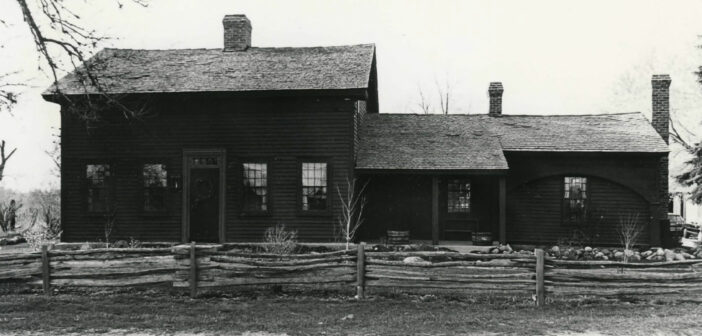The history of Greater Flint is steeped in relevance. We have seen titans of industry, great inventors, triumphs of commerce, heroes, villains, failure and renewal, and through it all stood our castles of time – the historic homes of Greater Flint.
If their walls could talk, the area’s oldest homes would give us nearly the full story, from the beginnings of our beloved cities and towns to today, including all the glory and heartache in between. That these homes continue to stand is a testament to our love of tradition and acknowledgment of our past. Here’s a look at five of Flint’s historic homes and how they came to be.
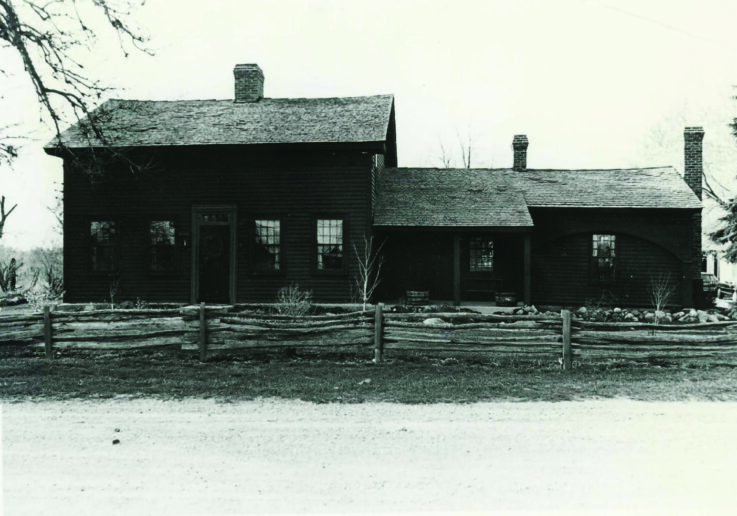
Photos by wikicommons
James H. Murray House
7232 Silver Lake Rd., Linden
Built: Circa 1823
When James H. Murray moved to Genesee County from New York in 1836, he became one of the first four settlers in the Linden area and this house was waiting for him – built between 1823 and 1835 by Philemon C. Murray (likely James’ father) and deeded to Murray when he arrived. He quickly settled and got to work building the area’s first dam and sawmill. His early neighbor, William Bennett, got a head start on the race to build a mill but Murray was able to meet his challenge. Through hard work and fortitude, Murray was able to get his mill in operation before Bennett had time to blink, causing Bennett to leave town for a more lucrative area of the state. After completion of his saw mill, Murray built the area’s first grist mill. As his mills operated, Murray joined fellow pioneer, William Lobdell, in the construction of the settlement and eventual town of Linden. He opened the first store, copper and blacksmith shops, and furnished the town’s second hotel. His land in Argentine is now home to the William Albert Harper Preserve and Murray Lake that sits at its center is named in his honor. The house has passed into private ownership throughout the years.
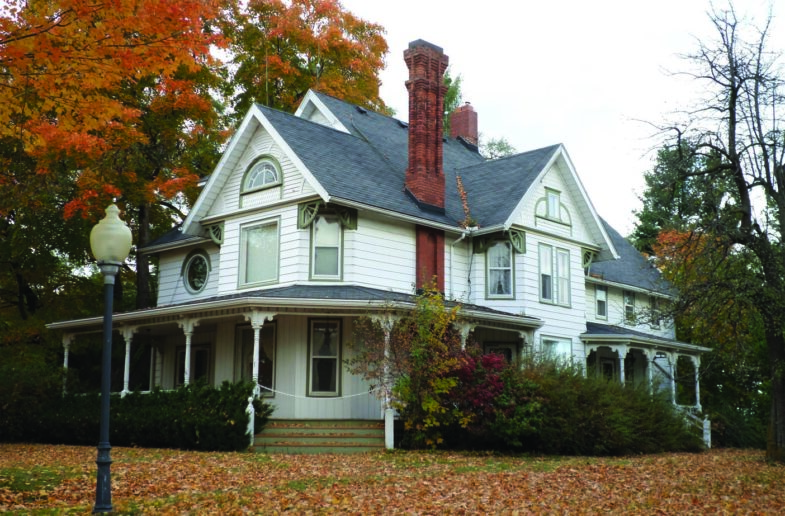
Photos by wikicommons
William Ray Perry House
6025 Perry Rd., Grand Blanc
Built: 1894
Very few of Genesee County’s founding pioneer families had as large an impact as the Perry family. In 1825, the Perry family became the second to settle in the area of Grand Blanc Township. They founded what became known as the Perry Settlement and helped numerous pioneers settle and build the town. William’s great-uncle, Edmund Perry, settled the historic Perry farmstead later owned by Simeon Perry. Edmund also established Grand Blanc’s first school in 1830. (Today’s Perry Innovation Center is named in his honor.) William Ray Perry was born in 1842 and seemed content to work the farm that his father, George Edward Perry, purchased and established in 1829 throughout his life. His family became very successful and as the years passed, the Perry family’s notoriety continued to grow. William Ray Perry built this home on his family’s farm land in 1894 just off the road which bordered the property, one that his family helped construct: Perry Road. The Queen Anne-style house stood out from the boxy Greek Revival structures of the Grand Blanc area, mirroring instead the architecture of the homes being built a few miles to the north in the City of Flint.
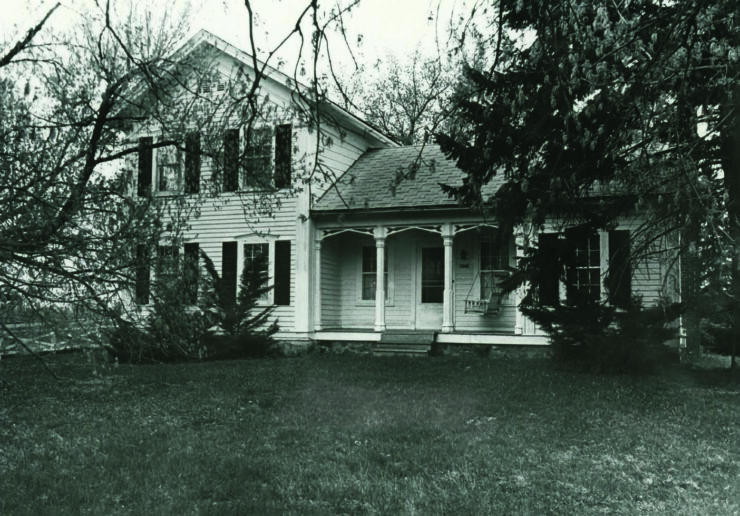
Photos by wikicommons
John Van Buskirk House
7348 Coldwater Rd., Davison
Built: Circa 1850
This boxy, Greek Revival-style home was the residence of John Van Buskirk, the first of the prominent Van Buskirk family to settle in Genesee County. One of Richfield Township’s first settlers, he quickly established himself as a lucrative farmer, stock raiser and valued community member. Born in Genesee County, NY he lost his parents at a young age. He spent some time in the state of Missouri with family before setting out for Michigan. In Richfield Township, he served as Overseer of the Poor in the area in 1857 and was extremely active in the church, serving as president of the Union Lyceum Building Society and integral to the establishment and building of local churches and places of worship. Shortly after he built his home, his brother Abraham purchased a wide swath of land directly across the street and joined him. His brother, who dubbed his home “Maple Hurst” and his family also became successful farmers and ardent community members. John Van Buskirk sold his home to William Miller and moved out of the area in 1915.
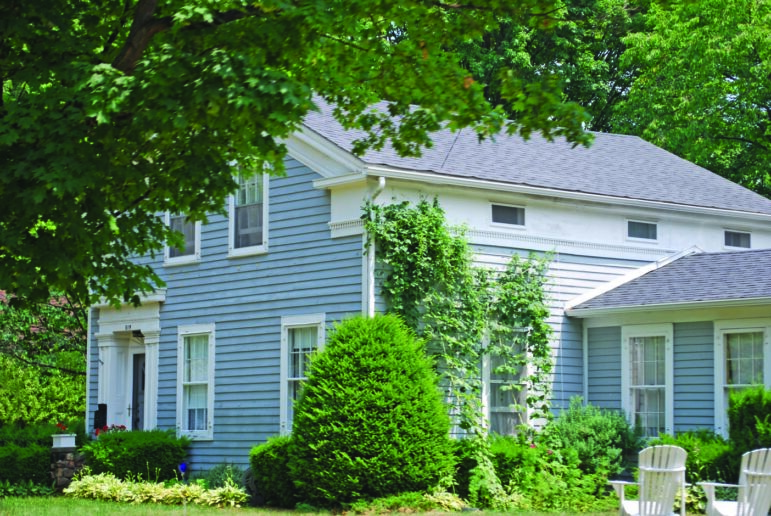
Photos by wikicommons
Benjamin Bangs House
819 S. Leroy St., Fenton
Built: Circa 1866
Another Greek Revival-style home (common to the time), the Benjamin Bangs House sits in the center area of historic Fentonville. Benjamin Bangs was a successful farmer with land located on Fenton’s south end. He became the first president of Fentonville in 1863 and built his home there three years later. Active in the clergy, he represented the Church of Fenton as an Elder at the Synod of Michigan taking place in Howell, MI in 1877. In his later life, he joined those headed west and found his way to Oakland, CA where he died in 1935. Through the years, the home has alternated between commercial and residential ownership once operating as a tea room, corset shop and radio station. During a recent renovation, homeowners found Bang’s personalized iron carriage plate buried in the backyard and in a wall, discovered an engraved silver spoon once belonging to Bangs’ daughter, Eliza.
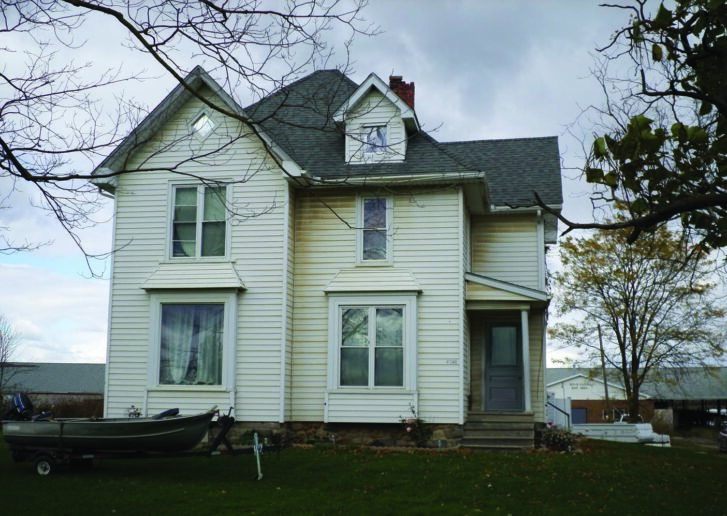
Photos by wikicommons
Frank D. Bloss House
8380 Reid Rd., Swartz Creek
Built: 1893
Frank D. Bloss was born in 1859 in Saratoga County, NY to Stephen and Mary Bloss. On Christmas Day in 1864, the Bloss family packed up and moved to a Michigan farm located one mile west of Rankin in Mundy Township. Bloss was raised on the new farm and attended Flint High School. After graduation, he became a teacher in the area for 15 years. In 1883, he purchased 40 acres in Gaines Township and in 1893, sold an apiary of 400 hives to raise money to build his two-story home constructed with lumber harvested from the surrounding woods. He farmed until 1906 and then moved to Flint where he lived until 1914. He took a position as field man with the Mt. Clemens Sugar Company, later becoming a district manager. In 1910, he was made agricultural superintendent for his district. After 1914, Bloss moved back to the farm. The home and farm passed down through the family and at present, Bloss Farms is still an operating dairy and cattle farm, as well as a local maple syrup producer.

